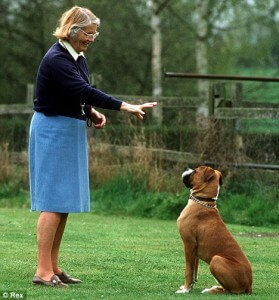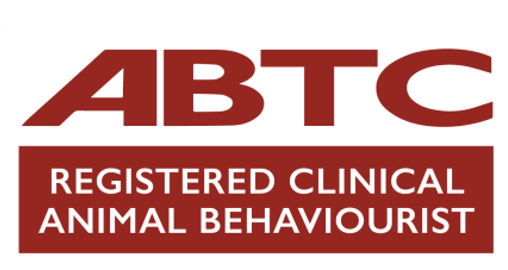Over the years I am sure we have all heard various statements relating to dogs and their behaviour – why they do this or that, what you should or should not do and so on…
However, every so often a friend, family member or client may come out with a pearl of wisdom that is actually a myth. Whether it’s “playing tug creates aggression” or “you have to be in charge of your dog or he’ll dominate you”, the list is endless.
Myths can lead to misunderstanding
Back in 2010, I researched how people interpreted dogs’ behaviour and how this might be linked to popular belief. One hundred participants were involved, equally split between dog owners and non-dog owners; they were asked to view various images of dogs and interpret typical dog behavioural scenarios. The results correlated with common myths around dog behaviour. Some of the highlights included:
• 41% of respondents had been bitten by a dog with over half of these being dog owners.
• 79% of respondents believed you “have to be in charge of your dog, or he’ll dominate you”.
• 10% of respondents believed that you “should never play tug games with a dog”.
• 54% of respondents believed a wagging tail is only a sign that the dog is friendly and approachable.
• 63% of respondents interpreted an image of a dog showing various stress signals as “happy”.
• 48% of respondents believed a dog experiences the emotion of “guilt”.
So, below is a pick of our favourite ‘doggie urban myths’ – debunked!
1. “You have to be in charge of your dog, or he’ll dominate you”. Many years ago I was taught by a then well-respected trainer that when a dog pulled on his lead, it was a sign that he wanted to be ‘in charge’. Thankfully times change and so have belief systems. Trainers and pet owners can benefit from the plethora of brilliant research coming out on an almost weekly basis to help us better understand canine behaviour. This particular this myth is borne out of the D word – dominance. When your dog jumps on you, pulls on the lead or grumbles at you when you attempt to groom him, this is not because he is dominant. The idea of dominance has been used to explain away most inappropriate dog behaviours, yet dominance is not a character trait, it “describes a social relationship between two or more individuals” (APDT, 2014). Guess what? Unlike Dr Evil, your dog is not sitting at home plotting to take over the world, let alone your household. If your dog pulls on the lead it is likely that he has not been taught to walk closely to you/might be fearful of the passing traffic/you are just too slow/the lead is too short etc, if he does not like being groomed it might be because he finds the clippers or brush scary/is in discomfort or pain and so on…
It is time to stop thinking about dominance and, instead, focus on the behaviour[s] you do want your dog to do and teach him that – praising and rewarding him for getting it right.
2. “Tail wagging is a sign of friendliness.” Tail wagging has to be the most misread gesture from a dog. People often assume that tail wagging is always a friendly sign. However, it only means that the dog is interacting with someone or something. It does not tell us much about the value of the interaction, hence other visual clues the dog is giving us such as what his ears, eyes, mouth and body posture are all doing need to be considered, as well as what the stimulus is doing and what is happening in the surrounding environment, in order for observers to gain a better understanding of the dog’s emotional state. This is where misunderstanding a single gesture such as tail wagging could lead to a dog bite.

3. “People who’ve owned dogs for many years must know best.” I’m sure we all know ‘dog experts’: a family member, neighbour or that friend who has “had dogs for xxx years” [fill in the gap!] so they must know best, right? Not always. My 2010 study found of the 50 dog owners with 20+ years experience (group 1) and dog owners with less than 3 years experience (group 2), it was group 2 that correctly translated images of dogs displaying various lower level stress signals. For example, lip licking, yawning, head turn, paw lifts. However, group 1 (owners with 20+ years experience) were more successful in answering questions relating to natural dog behaviours, yet fell down when it came to ways in tackling behavioural problems. Both groups were presented with a number of behavioural scenarios; they were asked to choose from multiple-choice options the action they would take in that situation. For example, “If a puppy bites you while you are both playing, would you: a) isolate the puppy for his bad behaviour, b) make a loud ‘yelp’ sound and stop the play, c) smack the puppy’s nose and say “no” or, d) ignore the bite and carry on playing. Nearly 50% of respondents from group 1 opted for “smack the puppy’s nose…” compared to less than 30% from group 2.
In almost every case, the majority of group 1 opted for the choices that lent themselves to a more ‘strict’ style of training. Does that make them bad dog owners? No. But what we could surmise from this study is that such misunderstanding in how to tackle problem behaviours might be down to the training methods these owners were taught years ago. Today there is much greater awareness around the benefits of using positive reinforcement methods when training animals including dogs, as well as theories relating to wolf-pack and dominance now debunked compared to what was ‘popular thought’ twenty years ago or more.
If you’re struggling with a doggie problem and a well-meaning family member, friend or neighbour offers you advice, smile and say “thank you”, then contact a certified positive reinforcement trainer.
4. “Playing tug creates aggression.” Most dogs love nothing more than a good game of tug. However, it is important that your dog learns to avoid making contact with your skin when playing this game, and for you to teach him requests that include “take it” and “drop it”. That way you can stop the game when you are ready to. A game of tug can be a great way to reinforce a wanted behaviour if your dog is motivated by such games. For play ideas and to understand how to keep playtime ‘safe’ read Playing With Your Dog ISBN; 978-1453529645.
5. “He knows he’s done wrong – he looks guilty.” Again, our 2010 research study found 48% of respondents believed dogs experience the emotion of guilt. We know that dogs have degrees of emotionality, just how much is a hotbed for debate in the canine world. Yet it is easy to understand how people may interpret a dog’s behaviour as an ‘admission of guilt’ when dogs appear to mimic the subtle signs that us humans might express when confronted with a situation; our shoulders may hunch down and our head might hang low, while our wide dewy eyes look up at the other person, and nerves may cause us to lick our lips as we become dry mouthed. See the similarities?
If you think about, when your dog displays such signals, it typically happens when we are upset with the dog, expressing our emotion through an angry face, a more gruff tone of voice, our body posture may bend into the dog’s personal space, and we may even shout too. Is it little wonder a dog will elicit these appeasement gestures to avoid a confrontation? It is these gestures that are often misread as guilty signs.
So the moral of these myths is…?
Let’s set our dogs and ourselves up for success by staying abreast of the latest research coming out about companion animals, reading credible and up-to-date resources that include learning to how to correctly identify different body language signals and behaviours, so we can avoid misunderstandings and strengthen that human-dog bond.
Learn more about our classes

Get Hanne's Book
Playing With Your Dog will help any dog owner work out the games that are best suited for their pet to play throughout his life, from puppyhood to old age. The book also shares some tricks for all ages, group activities, and recommended toys that dogs will enjoy.
























